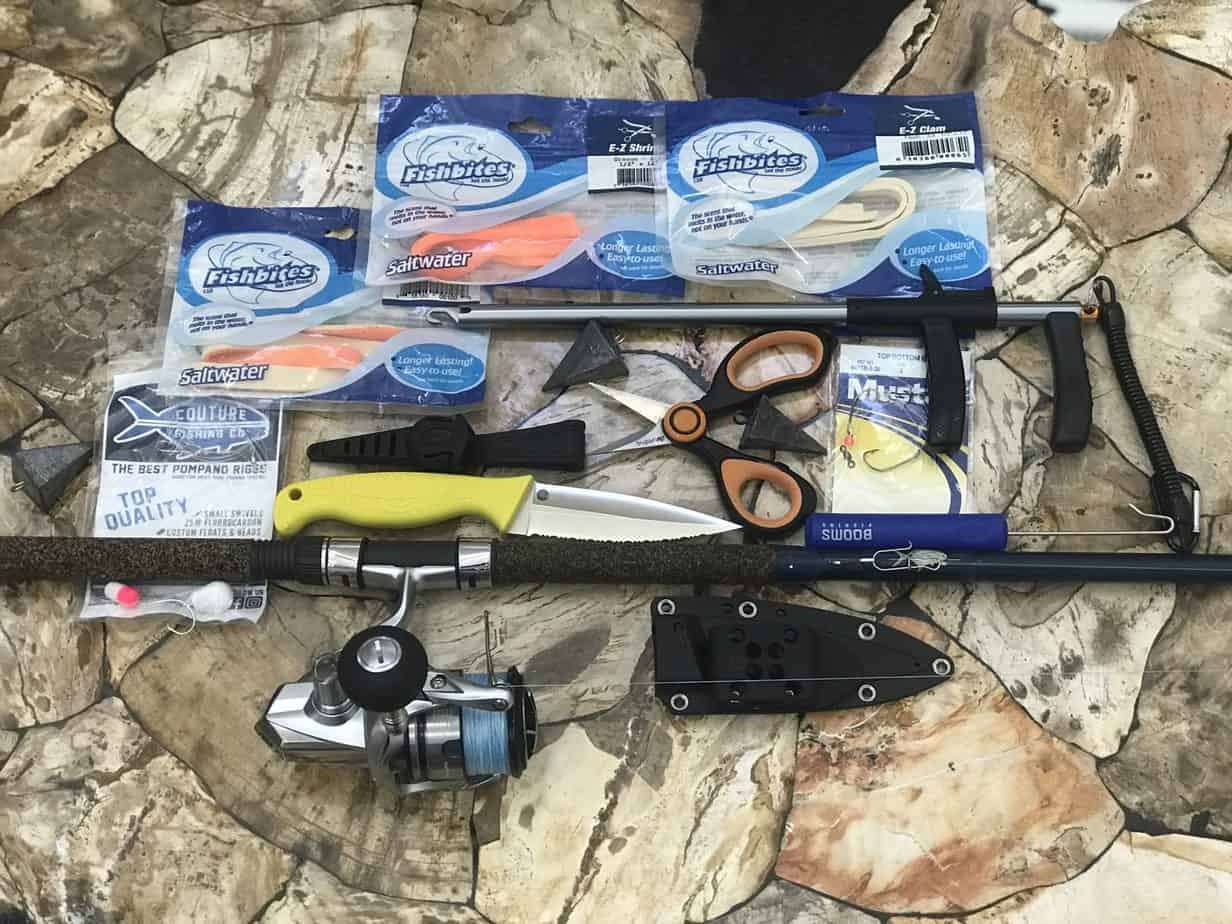Beach fishing is one of the most entertaining activities that can be done in coastal cities around the world. With beach fishing, you are combining the popular sport of saltwater fishing with the calming, relaxing, and scenic pleasures of the sandy beach. If you are lucky enough to live in or near a coastal city, or perhaps are just going to go on a trip to the beach for vacation, there are a few key pieces of equipment that you are going to want to pick up.
In this article, we're going to go over a few of the key items that every beach fisherman should have to get out on the sand and be well prepared to catch some fish. This set of equipment needed for beach fishing will in no way be an exhaustive list of gear. As it is with most fishing applications, the surf fishing gear you can acquire is only limited by your interest and your budget. The list of surf fishing equipment, provided below, is a great starting point to build on as your interest and desire to catch more and different fish inevitably starts to grow.
1. Surf Rod
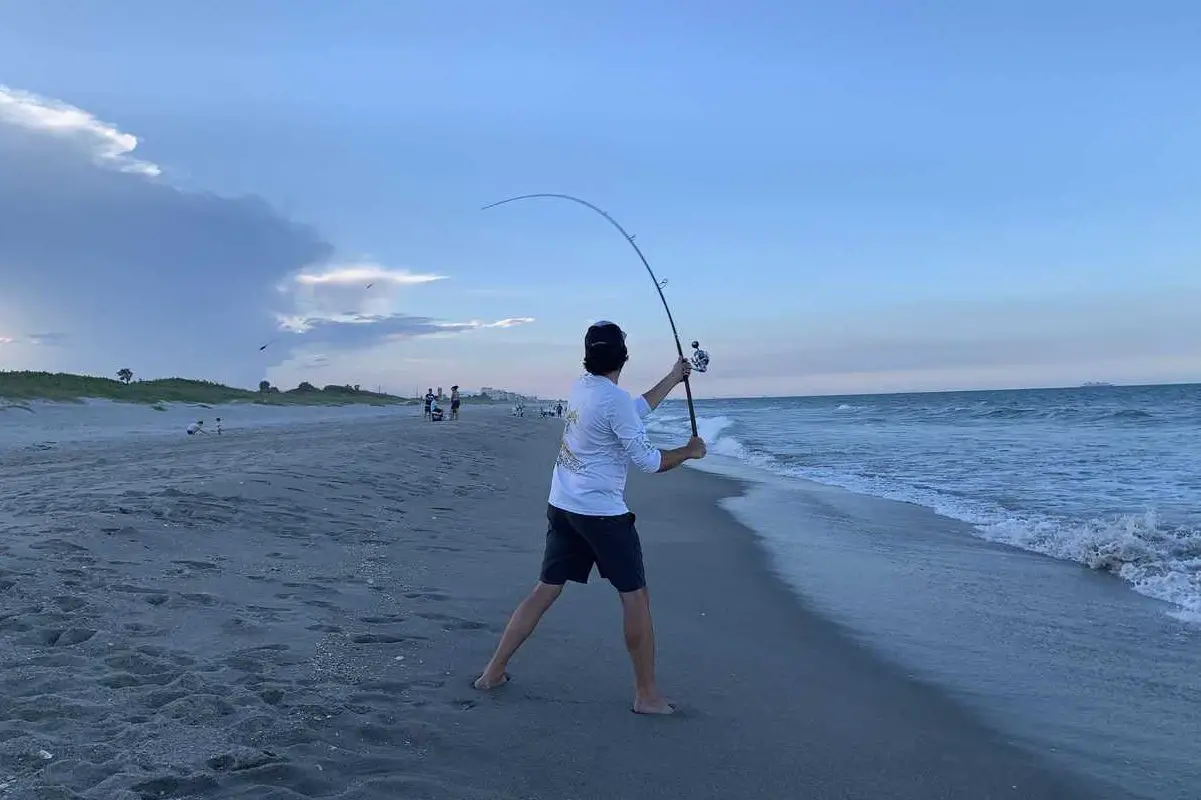
One of the most vital pieces of equipment every surf fisherman needs is a good surf fishing rod. The ideal surf fishing rod is 10 to 12 feet in length, medium-heavy to heavy power, and moderate to fast action. We highly recommend the St Croix Mojo Surf Spinning Rod in Medium/Mod-fast and 10′. A rod in this range will be able to easily cast 2 to 5-ounce weight (plus rig and bait) a good distance from shore, will help keep more of the fishing line out of the surf to better keep the bait on target, and will be able to fight larger fish.
To learn all the ins and out of rod selection, take a look at our article How to Select the Best Surf Fishing Rod. In this article, we go over all the different aspects of a rod from the length, weight, and action and discuss how each of these attributes plays into picking the right surf rod for your style and preference. As you will see in this article, there isn't a perfect rod for all styles of surf fishing. Live bait fishermen, targeting sharks farther out in deeper waters, will need a different setup than the typical pompano fishermen who uses small bait close to shore.
Now, can you surf fish with a smaller 6 or 7-foot rod? Yes, you can surf fish with a smaller rod in the 6 to 7-foot length range. In all honesty, you can fish with any rod that you have in your position, you will just need to understand its limits and adjust your fishing style to suit the rod's abilities. For instance, a small spinning rod might have a hard time casting a 5oz lead and a pompano rig, but it will do great casting a small spoon or jig. We go over all the aspects of understanding and using a smaller rod when surf fishing in our article Can You Surf Fish with a 6ft or 7ft Rod. In this article, you will see that it isn't as much about how your bait gets to the fish, but instead that it gets to the fish.
2. Reel
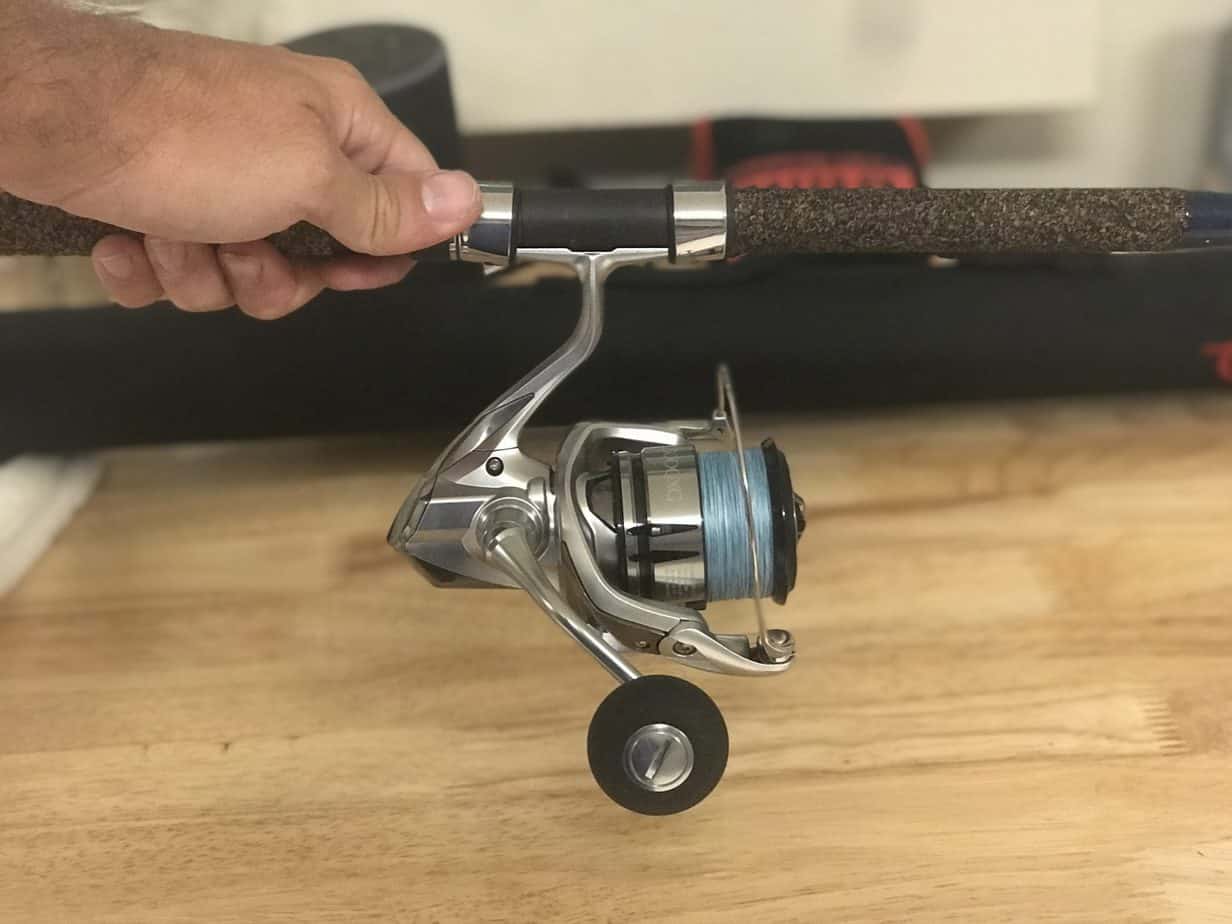
The next piece of equipment that we want to talk about is the reel. A good quality rod is great but it doesn't do very much without pairing it with the right reel. The ideal surf fishing reel is large enough to hold about 200 yards of a properly sized fishing line and is adequately equipped to withstand harsh conditions of the saltwater environment.
I find that the best reel for fishing at the beach is a spinning reel in the 3000 to 5000 size range that is specifically designed for saltwater fishing. This size and style reel will hold enough braid fishing line to be able to cast a good distance out while also leaving enough line on the spool in case you hook a big fish. Furthermore, reels built for saltwater fishing are constructed with components to last several seasons of saltwater fishing without much corrosion. The Shimano Stradic 4000XGFL is our go-to reel.
When it comes to selecting the right reel, a high-quality reel will save you in the end. Many mid to high-end reels from well-known brands such as Shimano, Penn, and Diawa will last several seasons and will often come with a good warranty. With that being said, I have had a cheap Sea Striker for over 4 seasons now and it is still hanging on (barely) because I am religious with the care of my reels. With proper care, even cheap reels can last a while, higher-end reels will just last longer.
3. Fishing Line (Main Line)
Next on the list of must-have gear is the main fishing line. There are two schools of thought here, some prefer braid and others prefer monofilament. In general, monofilament is more abrasion resistant, is easier to tie, and is more shock absorbent. However, where braid wins out is in its strength to diameter ratio and casting efficiency.
Most anglers agree that the best main fishing line to use for surf fishing is 20 to 30-pound braid. This size and type line will pack a 3000 to 5000 series reel with plenty of line needed for most surf fishing applications. Furthermore, the braid will last much longer on the reel than monofilament and will cast further.
One other thing you will quickly notice about braid is that it is much more expensive than monofilament, sometimes double or triple the cost per foot. Furthermore, since braid is so much smaller than mono, it takes much more line to pack a reel. One cost-saving trick I learned, for reels that will take far too much braid than needed, simply start the spooling process with monofilament and leave enough space for about 150 to 200 yards of braid. Just attach the mono to the spool using an arbor knot and the braid to the mono using uni to uni knot. On some reels, this could save you $30 or more compared to stuffing it full of braid. Depending on the capacity of the reel, a full spool of braid isn't cost prohibitive. For example, the Shimano Stradic 4000XGFL reel has capacity for 180yds of 30 lb braid, meaning you could use all braid and it would cost you a little over $25 for the line using PowerPro Super Slick V2 20# line.
4. Leader Line
The next thing on the list is the leader line. Depending on what you are fish you are targeting will determine the size and material of your leader line. Some fish are very easily spoked and will require a smaller diameter and transparent leader line to get them to take your bait. Other fish, who might be less easily spooked and have sharp teeth or gill plates, might need a metallic leader to keep them hooked up.
The majority of anglers agree that 20 to 30-pound fluorocarbon leader line is best for most surf fishing applications. This is because the fluorocarbon leader line has superior abrasion resistance, less stretch when compared to monofilament, and reduced visibility in the water. Specifically, we'd go with the Seaguar 20lb fluorocarbon leader.
Many fishermen still prefer to use monofilament for leader line, which is perfectly acceptable. Monofilament has one big advantage over the fluorocarbon leader line which is its cost. Mono is fractions of the cost of fluorocarbon and is much easier to come by. However, while monofilament can be easily substituted as the leader line, you likely will need to retie your bait/lure more frequently due to abrasion to the mono. If you prefer mono over fluorocarbon or need to substitute in a pinch, be sure to check the leader regularly for any damage.
5. Hooks
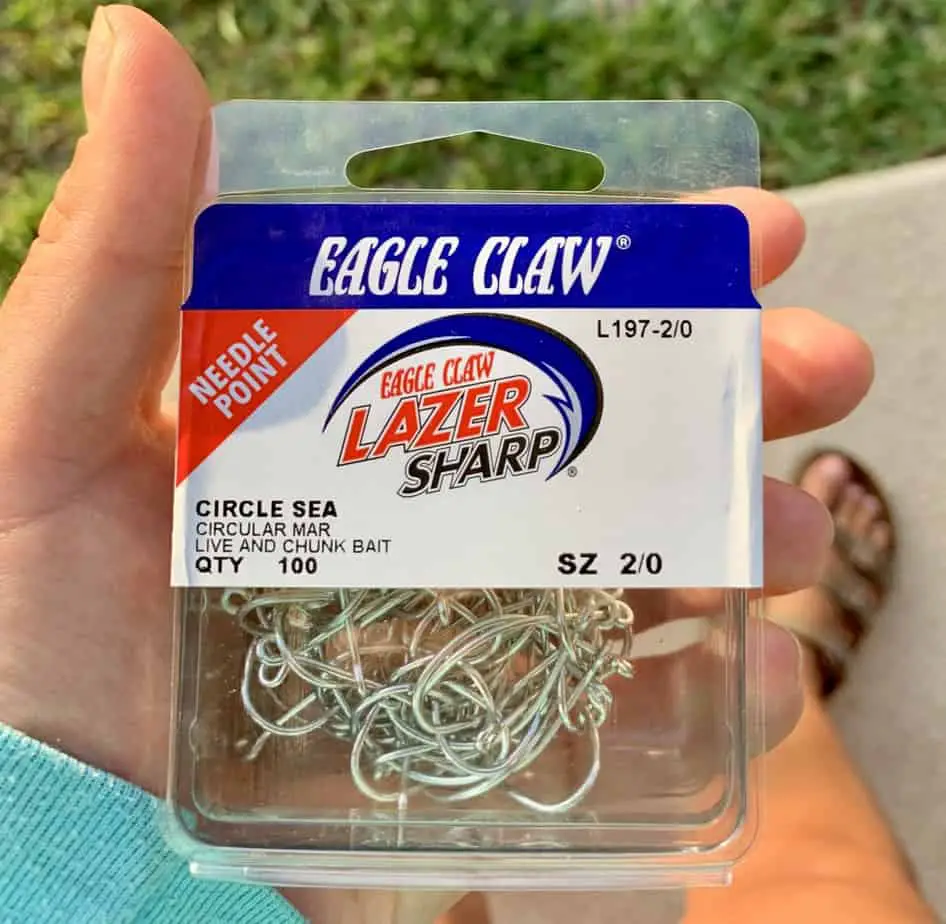
Every tackle box needs a good selection of high-quality hooks if you expect to land more fish than you lose. I generally will have an assortment of circle hooks and Kahle hooks ranging in size from size 1 up to about a 6/0 in my tackle bag at all times. If you are unsure about the difference between the Kahle hook and circle hook I recommend you take a look at our article titled Kahle Hook vs Circle Hook where we compare and contrast both types of hooks. Depending on your style of fishing and your hook set preference will determine what hook is best for you.
Most anglers agree that the best hooks for surf fishing applications are 1/0 to 3/0 circle hooks. This size range of hooks will be able to hook and land most fish caught from the beach and can accommodate most types of bait, including smaller live baitfish. Furthermore, the circle hook is recommended not only to ensure a good and secure automatic hook set but also to preserve the fish by reducing the occurrence of gut hooks which could unintentionally kill the fish. You can't go wrong if you use the Mustad Ultrapoint Demon Circle hooks in size 2/0, as the sharpness penetrates a fish's mouth so easily.
If you are looking to use larger baitfish to target larger fish such as tarpon or shark, you may need to step up the size of your hook. In our article, Top 10 Fish Commonly Caught From the Beach, we list the most common fish caught along the US coastlines as well as the recommended bait and hook size to catch them with.
6. Sinkers
Next on the list of essential tackle is the sinkers which can come in a variety of different weights and styles. The main purpose of the sinker is to help cast your bait out to the intended target spot and keep it there for a desired length of time. Having the right sinker for the condition and application gives you a big advantage for catching more fish.
There are a dozen or more variants in the types of sinkers that can be used for surf fishing. The best, and most common types of sinkers for surf fishing are the bullet sinker, pyramid sinker, and sputnik sinker. In these styles of sinker, most anglers agree that the best sizes are between 2 oz and 5 oz in weight.
I personally use and recommend the sputnik style sinker more so than any other style. I generally will use a 3oz or 4 oz sinker with my double drop or pompano rigs and generally have very little issues with keeping them in place, even on rough days. On calmer days, I will sometimes switch over to the pyramid sinker, mostly because they are cheaper and easier to come by in case I lose my rig.
For live bait applications, I will sometimes switch over to the bullet-style sinker to give my bait a little extra room to swim around and attract other fish. This same approach can be taken with a fish finder rig and a pyramid or sputnik sinker.
When outfitting my tackle box, I will usually grab a couple of sinkers of each bullet, pyramid, and sputnik style in 2oz, 3oz, 4oz, and 5oz sizes. Because I use the 3 oz most frequently, I will sometimes keep an extra couple of 3 oz sputnik and pyramids on hand.
7. Sand Spike / Rod Holder
If you're like me and like to take some time to relax and take in the scenery while surf fishing, I highly recommend that you also pick up a few rod holders, otherwise known as sand spikes. While I do like to cast and retrieve quite often while surf fishing, I also like to have one or two rods out in the surf held with my rod holders to increase my chances of catching fish. Furthermore, having a place to put your rod when baiting a hook or tying on a lure will keep your reel out of the sand much more easily.
You can pick up our favorite Sand Spike from Amazon.
Another added benefit I have found with having a sand spike on hand is that it allows smaller children to participate in the fishing experience by giving them something to hold the rod while they reel in the fish. With the sand spikes (rod holders) in place, my two young daughters are almost automatic when they see the rod tips bouncing.
8. Tackle Bag w/ Removable Trays
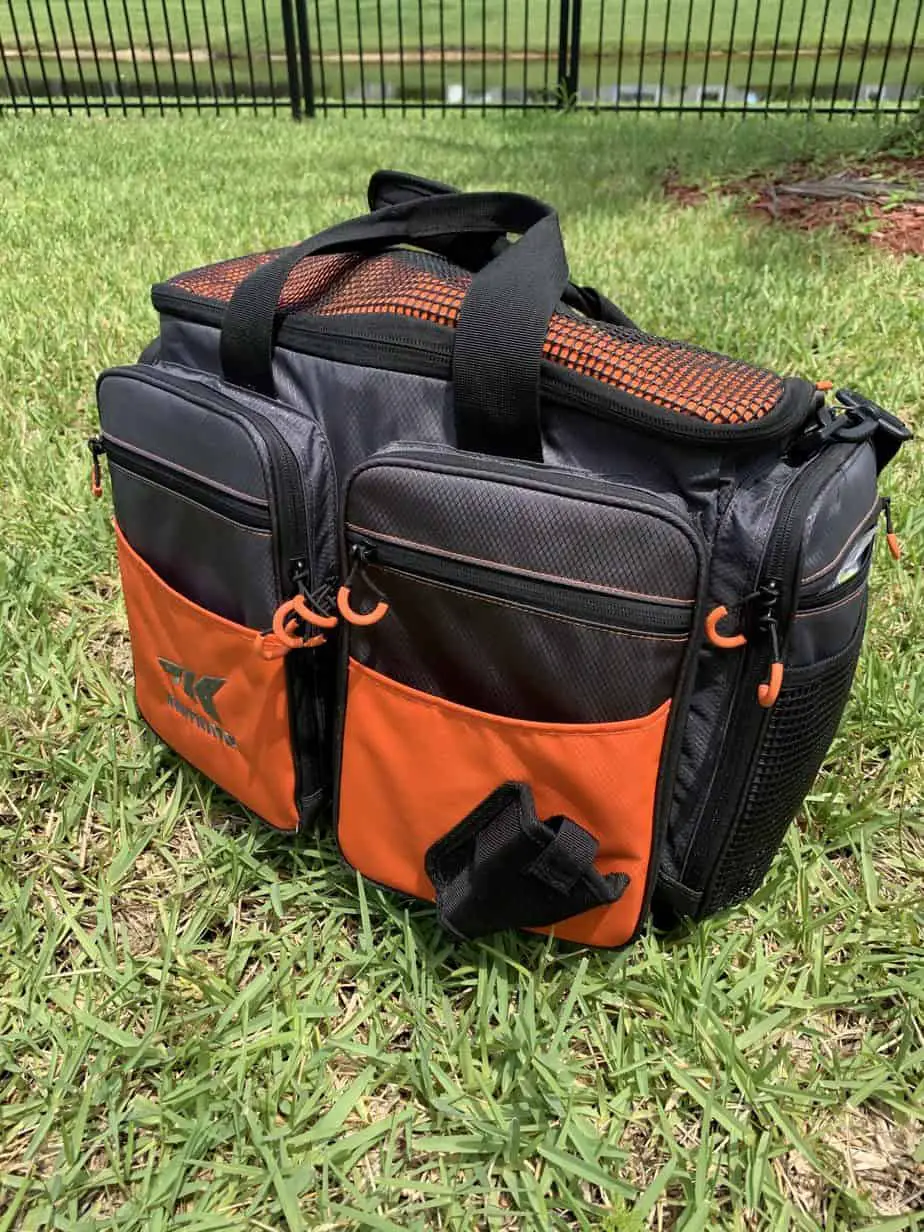
Now, before we go out and buy all the rigs, hooks, leaders, and bait, you are going to need somewhere to store it. Having a good tackle box (or bag) will help you stay organized and make your life to and from your fishing spots much more efficient. I like to make sure my tackle bag is always on the ready and stocked full of all the essentials needed for my fishing trips (excluding any live bait). This way, when the urge and opportunity arises, I just need to grab my bag, rod and reel, and sand spikes and head on out.
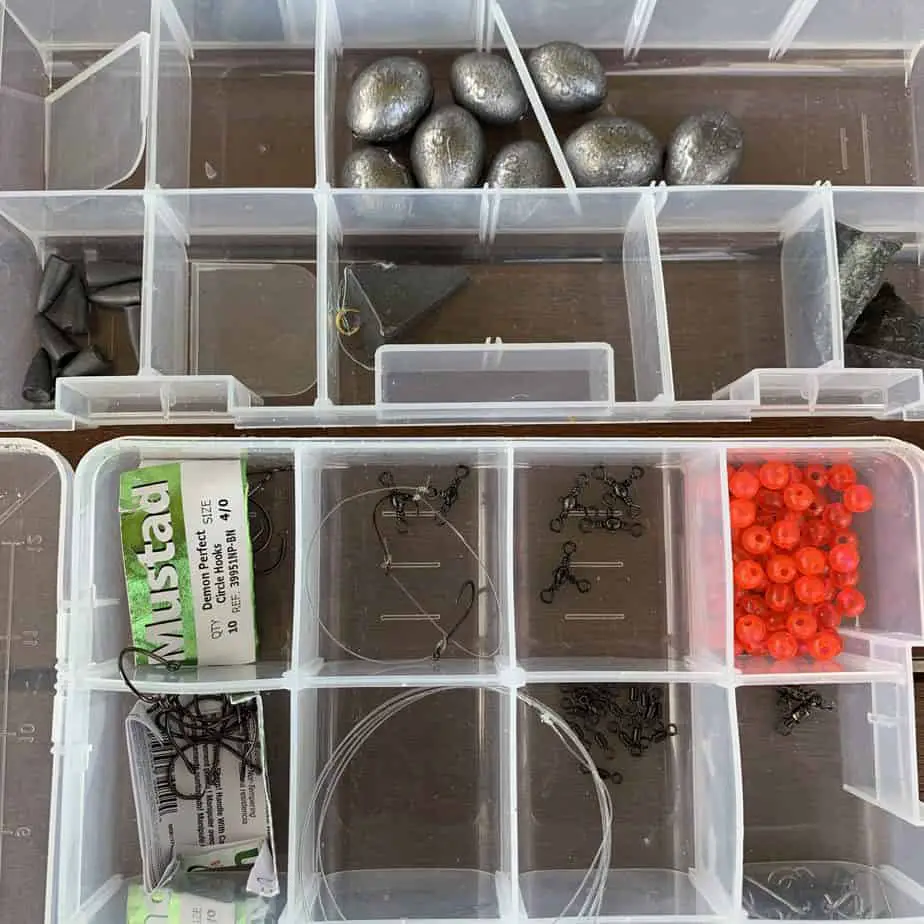
In my opinion, the best tackle storage solution for surf fishing is a tackle bag complete with multiple tackle trays that can be used to organize tackle and are easily accessible. Furthermore, the best tackle bags will include multiple storage compartments and salt-water-resistant closing mechanisms such as zippers and/or buckles. The KastKing tackle bag pictured above does the job really well.
When organizing my tackle trays in my bag, I like to put everything needed for particular parts of outfitting my rig in a single container. For instance, I like to keep all my hooks, snap swivels, barrel swivels, and beads in a single tackle tray so I can assemble my rig from one box. I also like to keep all my hard plastics in one box and soft plastics in another to prevent contamination.
You will have your own style of organization to fit your style that you will adjust many times. It isn't as important how you organize, but instead that you are organized so you don't spend all your time searching for the tackle vs fishing.
9. Knife
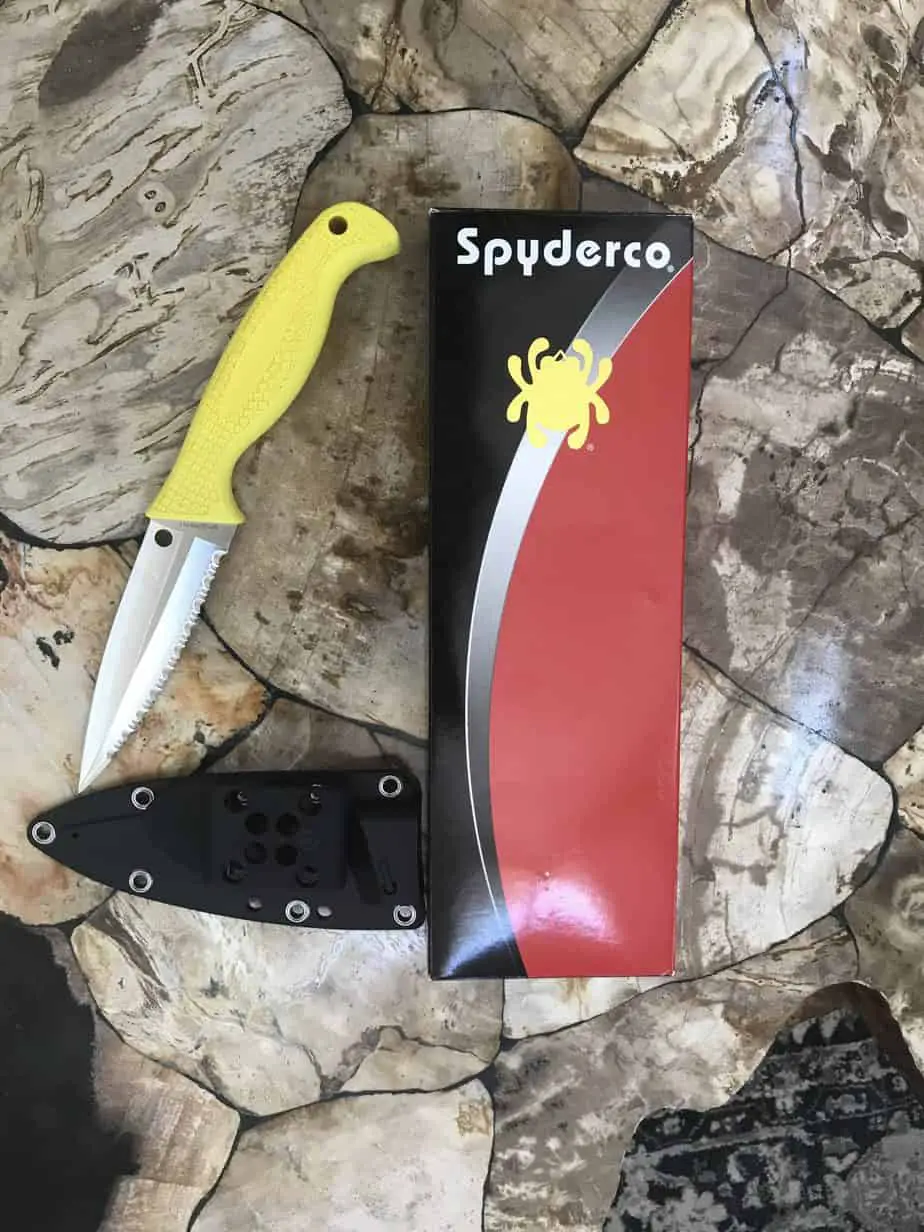
There are many uses for a knife when fishing, from cutting fishing line to cutting bait, and cleaning fish. No knife does all these different tasks equally as well as a knife specifically designed for that task. As such, there are many different knives that fishermen should have at their disposal. To learn more about the many different types of knives that can be used when surf fishing, I encourage you to read our article on how to pick the best knives for surf fishing by clicking here.
In general, we have found that the best overall knife for surf fishing is a fixed blade utility knife that is constructed of corrosion-resistant material, such as H-1 steel, that has a plastic easy-to-grip handle, and comes equipped with a quality sheath to help secure the knife in place and protect your hand from injury. While this knife will not perform well as a filet knife, it can do most other cutting tasks required by the surf fisherman. The one we use is the Spyderco Fish Hunter Fixed Blade Knife.
10. Bait
Bait for surf fishing comes in 2 major categories, natural bait and artificial. Natural bait can be used as cut bait or live, depending on what is available and the type of fish you are targeting. Artificial can come in various forms to include soft plastic worms and swimbaits, hard bait such as plugs, spoons, and jigs, as well as some artificial cut baits such as the popular Fishbites.
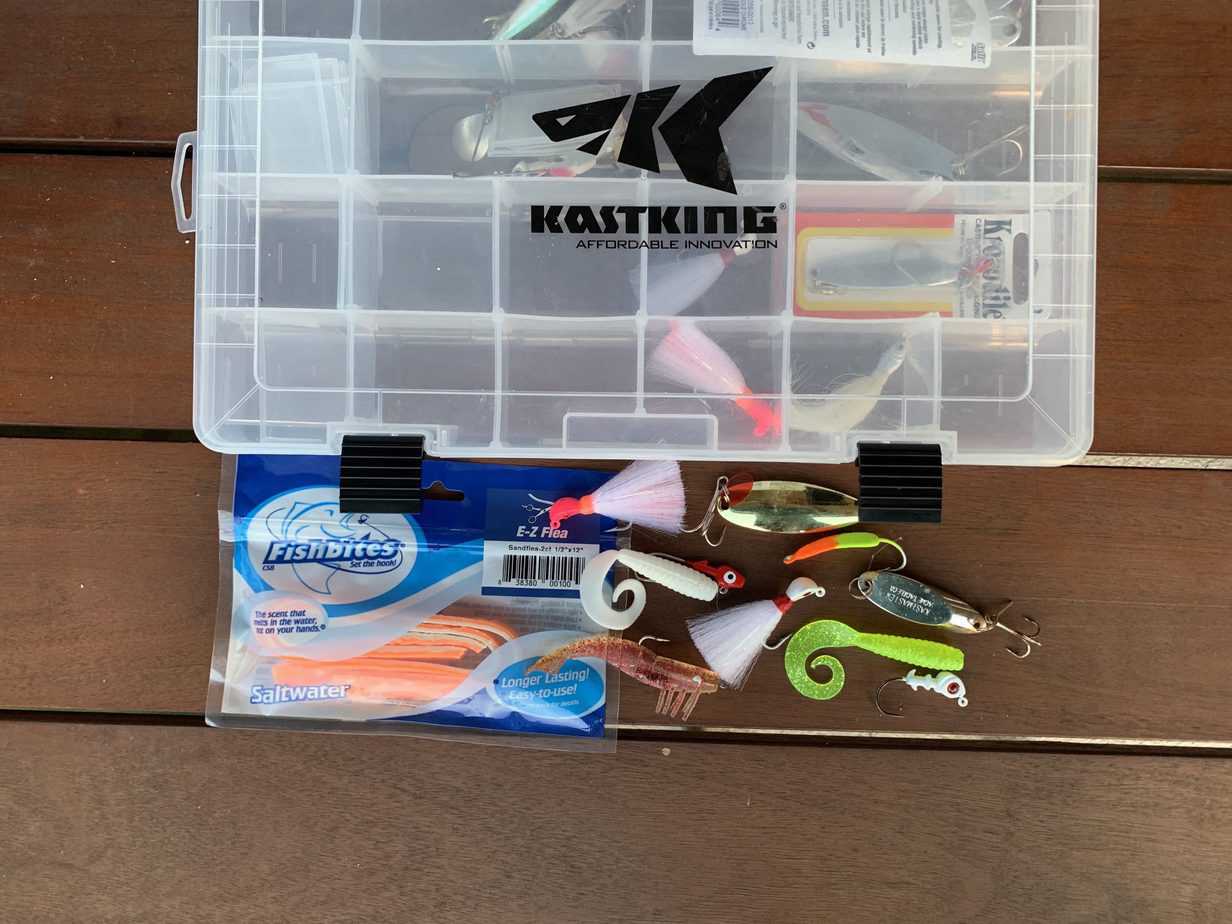
I have found that the best artificial baits to use for surf fishing include fishbites, gold and silver spoons, and soft plastic jigs. Having a selection of these lures on hand, in various sizes and colors, while surf fishing can ensure you have something on hand to target most species of fish that can be caught from the beach.
As for natural baits, most anglers agree that the best bait to use for surf fishing is live natural bait that matches the baitfish predominant in the area in which you are fishing. Most commonly, live shrimp, pinfish, and croaker will be best for most surf fishing. Additionally, fresh-cut bait such as shrimp, clam, squid, and fresh baitfish will also work well for most fish at the beach.
In our article, Top 10 Fish Commonly Caught From the Beach, we list the most common fish caught from the beach as well as the bait that generally works best for each fish. Additionally, our article titled “Best Bait for Surf Fishing” goes over common bait that can be used when fishing at the beach, both artificial and natural.
Other Miscellaneous Items Every Surf Fishermen Needs
There are a few other items that every surf fisherman needs in their tackle box, that didn't make the main list, but you will miss if you head out for a day of fishing without them. These items might be obvious to most, but I wanted to make sure they were included somewhere, just in case you are using this article to build your surf fishing kit.
License
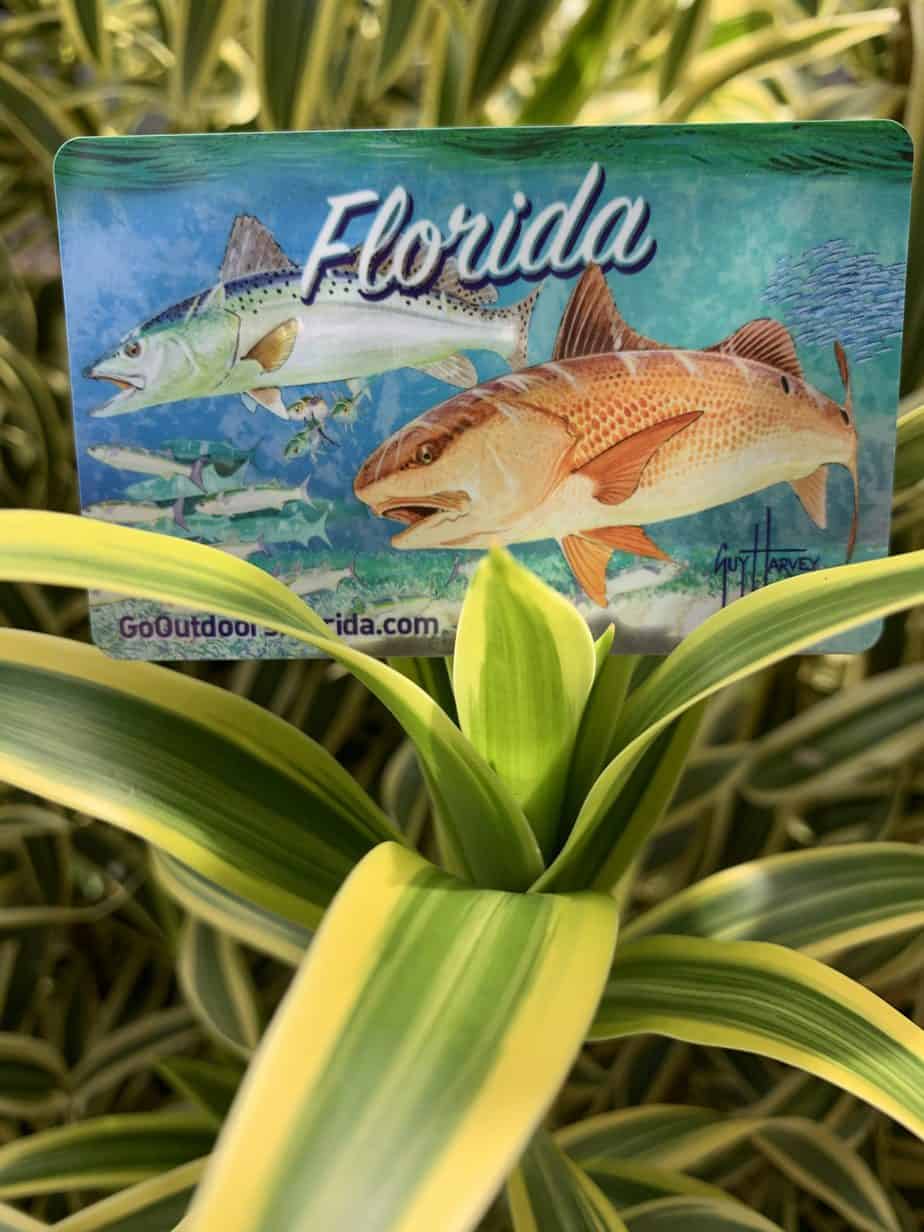
Stay legal out there. Never fish without proper licensing and tags. Also be sure to know your local rules and regulations before you fish, especially if you are bringing home for dinner.
Pliers
Just in case you need a little more leverage to dehook a fish, or you need to reach into a fish's mouth while avoiding teeth, a good pair of needle-nose pliers is a must-have. There are a lot of different kinds of pliers out there, and all do the trick pretty well. Just make sure to purchase one made from corrosion-resistant material if you want them to work for more than a trip or two. Here's a good pair but Cuda.
Abrasion Resistant Gloves
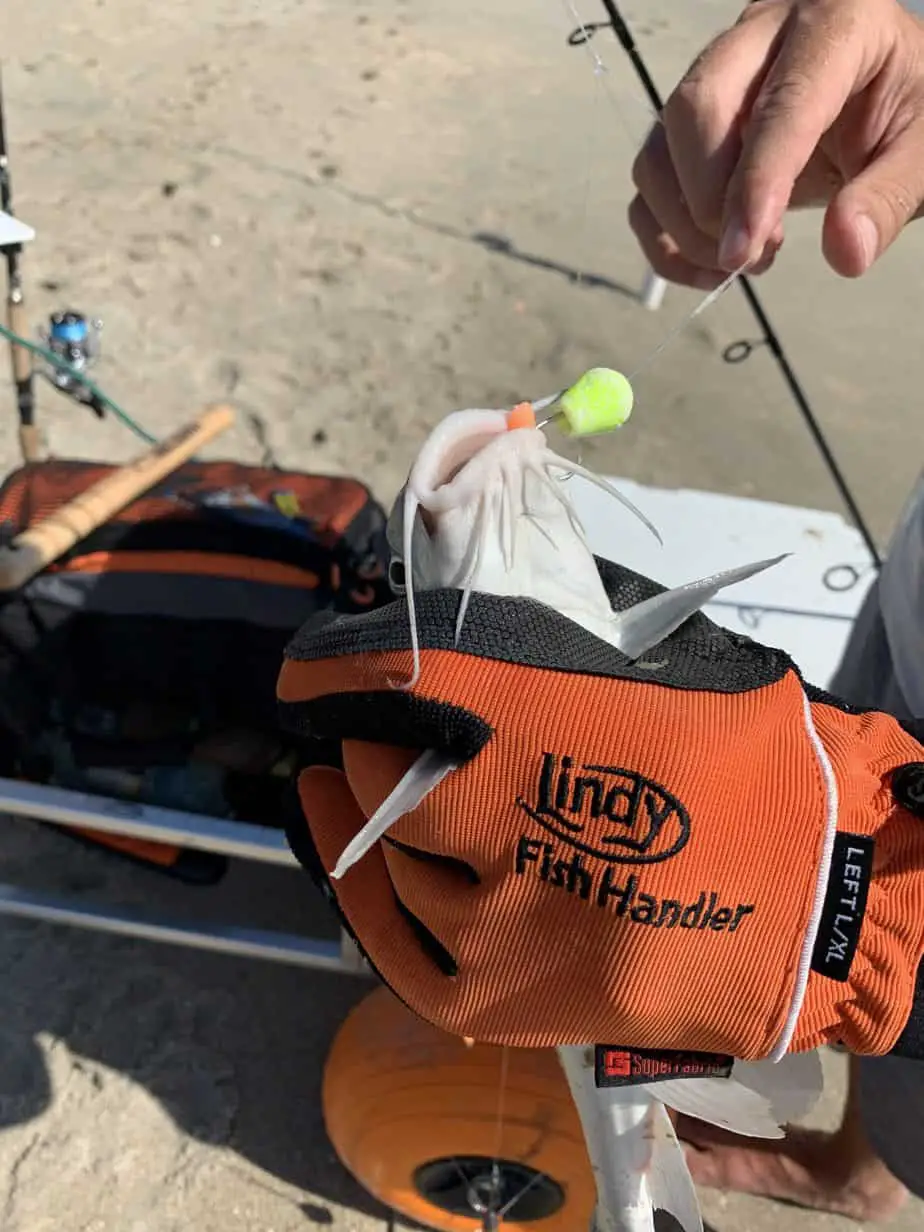
Sometimes you are going to need to grab some fish that could cause you some serious injury if handled improperly. Having a good pair of gloves can be a big deterrent to getting stung by a catfish, bit by a bluefish, or cut while cutting bait. Try this pair that I'm wearing in the picture above.
Towel(s)
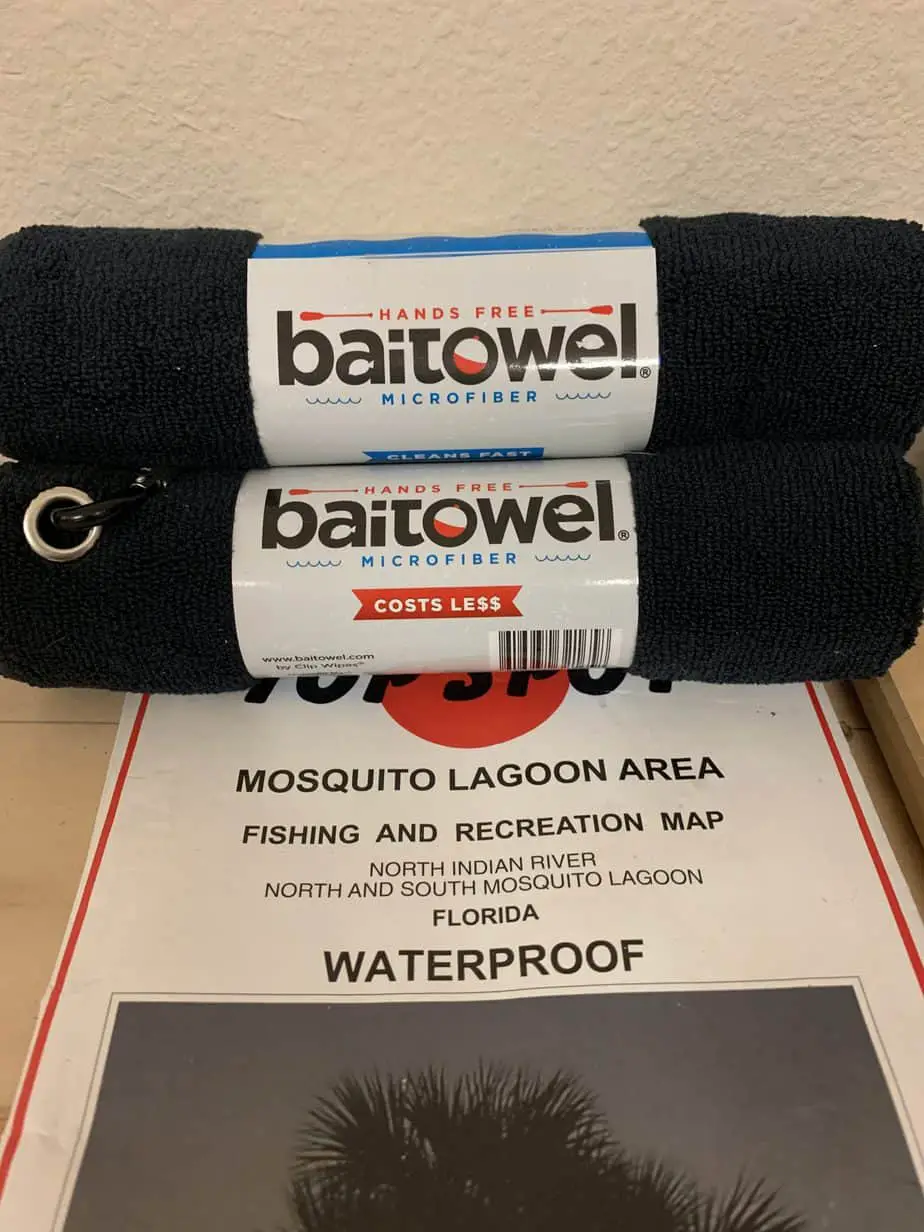
Not much to say about this item. You need something to dry your hands when wet and clean your hands of fish “stuff” before eating your sandwich. Pant legs work well too, but my wife hates it when I come home wearing more fish than what is in the cooler. Baitowel is a good option, especially since it has the added carabiner.
Sunscreen
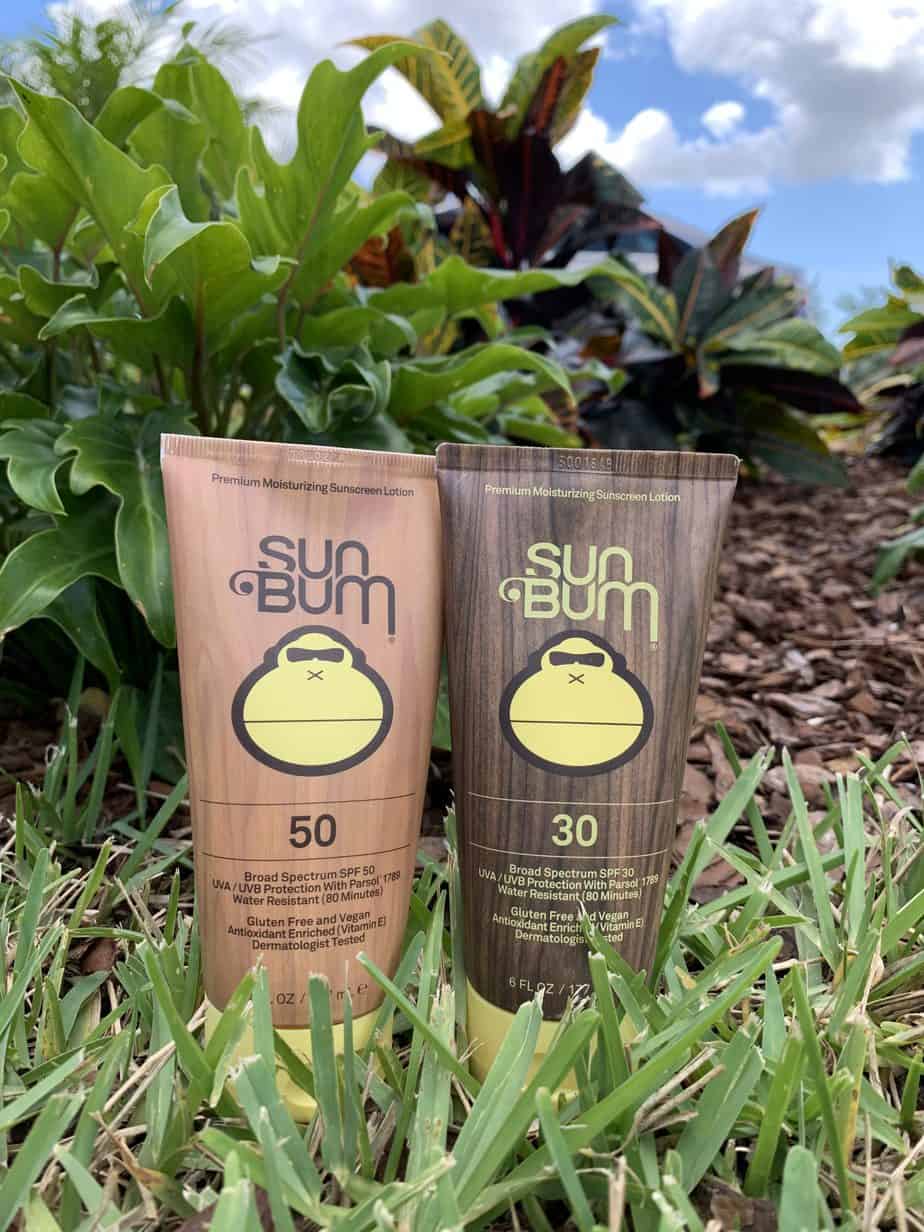
Don't get burned when you are out there. I like to use a good SPF 50 to make sure I am well protected throughout the day. Be sure to re-apply every few hours to keep your skin safe and healthy. SunBum is a good reef-friendly brand.
Insect Repellant
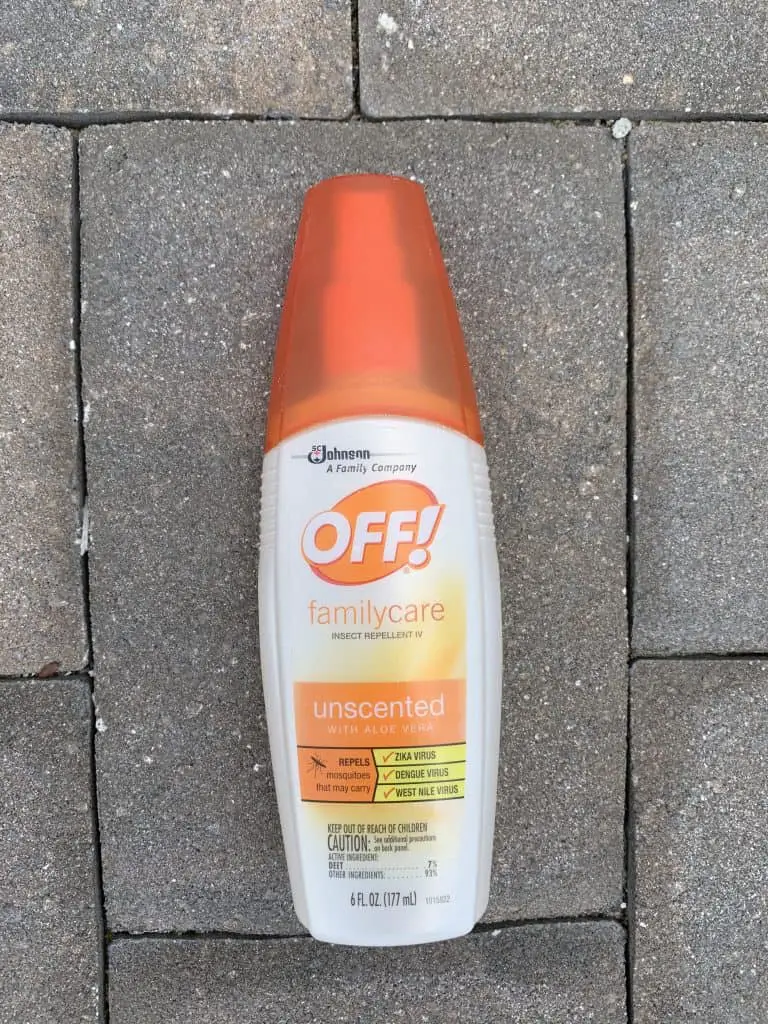
Bugs can get pretty bad, especially early in the morning and later in the evening. I always have a spray bottle or two of insect repellent in my bag at all times. I prefer pump spray bottles over aerosol because they last longer and are less prone to exploding in the heat of the sun.
Hat
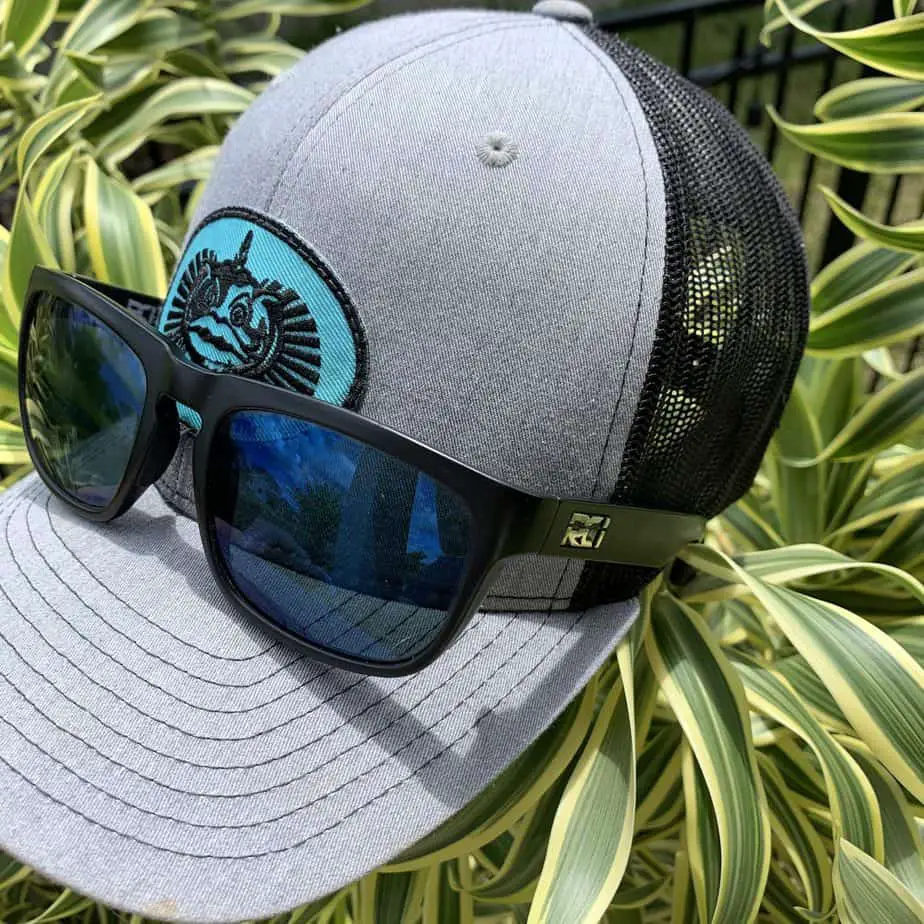
Keep your head protected and your eyes shaded with a good hat. I usually go with a normal ball cap style, usually netted for good airflow. Sometimes I will break out the old straw hat for some extra shade.
Polarized Sunglasses

This one probably should have made the top section. A good pair of polarized sunglasses will not only help you spot the fish but will also keep your eyes healthy. If I ever forget my sunglasses, it doesn't take long for me to develop a nice headache caused by my continuous squinting. Sometimes wear my RCIs, and sometimes you'll see me in my Costa Rinconcitos with the matte black frame and mirrored blue polarized lenses.
Dehooker (hook remover)
A good de-hooker is a must-have for beach-going anglers, especially when the catfish bite is hot and you want to reduce the chance of getting stung. With a good dehooking tool you will no longer need to handle fish to get the hook out of its mouth, putting your hands in danger.
There are a lot of different types of de-hookers some very basic and some more sophisticated. I find that the best deal hooker that is needed for every surf fishing tackle box is the standard hook remover. This tool is small lightweight and extremely cheap. To remove your hand from danger even further, some dehooking tools have a longer handle that can be beneficial, especially if you are dealing with larger fish with teeth such as sharks.
Scissors
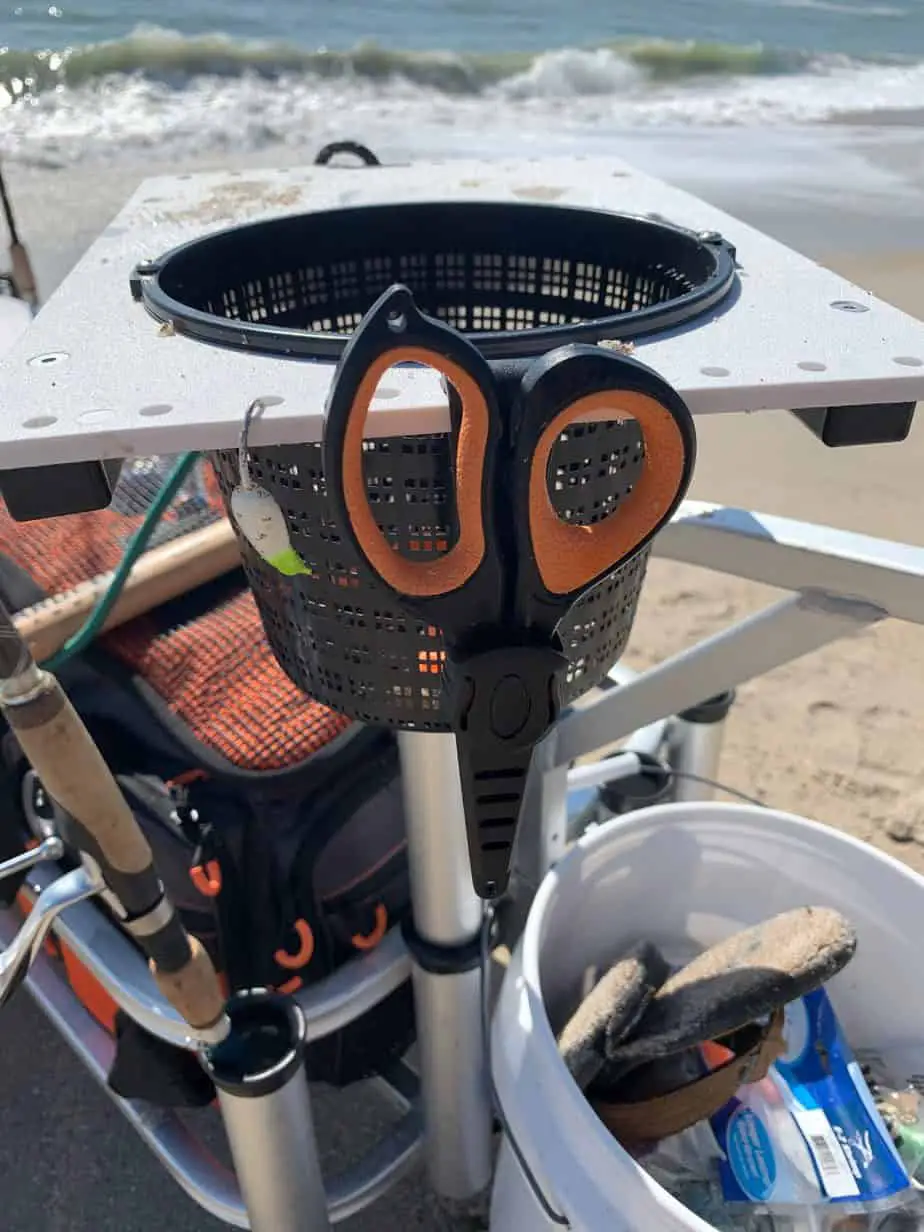
Believe it or not, but one of the most used tools in my tackle bag is my scissors. I use my scissors to do everything from cutting braid, to cutting bait, and removing tag ends from my leader line. Having a good pair of scissors is a game-changer and will probably be your choice of cutting tool over a knife in many instances.
I have gone through several pairs of scissors during my fishing career. No doubt, you will have to replace even the best pair after eventually, even the high-end ones. I have found that the best pair of scissors for surf fishing are ones that are made of hardened corrosion-resistant metal, have at least one serrated blade, have plastic handles, and are small enough to fit in your pocket. An added benefit to most good scissors is a protective sheath to help protect the blade as well as your hands from injury. Here's a pair that is known for cutting through braid.
Tight lines and high tides, y'all!
Recent Posts
Fat Cow Jig Strips: The Ultimate Bucktail Jig Upgrade for Surf Fishing
As discussed in my previous article, "Surf Fishing with Bucktail Jigs: Ultimate Guide for Beach Anglers," bucktail jigs are a staple in any surf angler's tackle box, offering a versatile way to catch...
In my previous article, "Surf Fishing with Bucktail Jigs: Ultimate Guide for Beach Anglers," I introduced you to the bucktail jig and discussed how versatile of a lure it is for catching a wide range...

